Isis
Publication of the History of Science Society
Special Issue, “200th Anniversary of the Apollo Lunar Landing”
July 20th, Gregorian Calendar Year 2169
Mars Year 114/Ls 332.21
By the time the onboard emergency systems detected the pathogen, the thick rows of plant life cultivated by Project Dandelion had already begun to die. The devastation tore through the grow room so quickly that the team of botanists and bioengineers could only watch, helplessly, as the stink of death overwhelmed the space station’s ethanol processing systems, choking out the air necessary to sustain delicate human lungs.
Surviving crew members later reported how their response times to the crisis were slowed by the debilitating emotional anguish of the disaster. While the team had been cultivating plants for practical purposes, they developed deep parasocial attachments to the organisms they coaxed into survival in the hostile environments of space. Crew members described how, on the morning of September 1st, 2084, they felt as if they woke up to discover that their children had been violently massacred overnight.
As is now common knowledge, Vesta Corporation, a high-orbital logistics firm at the center of the asteroid mining industry, recruited biologist Dr. Bernice Petra Cornwallis in 2076 to pilot a space horticulture program.2 By 2078, Cornwallis developed a horticultural outpost at Jupiter’s L4 to supplement the diets and biofuel stores of Vesta Associates mining in the Jupiter Trojan asteroids.3 However, after six years of successful operation, the project abruptly collapsed. A mysterious microbial contaminant wiped out all of the plants onboard. The plants’ rapid decline not only decimated years of scientific research on space biology but threatened the very survival of Vesta’s miners who were critically reliant on the biofuel supplements and the oxygen the plants produced. Indeed, in the hasty evacuation to Earth, several miners, stranded without food that Cornwallis’s lab provided, perished on an output facility on an asteroid.
History remembers Project Dandelion as the biggest space-based infrastructure failure of the previous century. Dr. Bernice Cornwallis, the scientist leading the project, was held responsible for the failure, inviting comparisons in the popular press ranging from the sorceress Medea to the notorious Soviet scientist Trofim Lysenko. Vesta, United States Senators, and the media blamed the pathogen’s infiltration, and the miners’ deaths, on Cornwallis. Subjected to lengthy and highly publicized congressional hearings upon her return to Earth, the biologist soon retreated from public life. In the familiar story, Cornwallis ceased her research and retired in disgrace to her home in New York.
This is the not-so-familiar story of Project Dandelion. We have obtained, from the Cornwallis estate, the biologist’s previously undisclosed private diary leading up to the disaster, her research papers, and some personal possessions. The selected artifacts in the accompanying Dossier illuminate a never-before-told story about this history of life in space. They reveal that Cornwallis was decades ahead of her time in terms of conceptualizing a mutually dependent ecosystem of organisms that she applied in outer space: what she called “bioforming.”
In the harsh conditions of outer space—in microgravity, exposed to radiation—humans and their multispecies companions bioformed each other in evolutionary processes not encountered on Earth. “Bioforming describes the dazzling interplay of biological processes on-board the spacecraft,” Cornwallis wrote in the diary she kept through Project Dandelion, “in which we humans are merely one of many agents that adapt to the space environment—and that adapt us.”
We tell the story of Project Dandelion chronologically to situate the reader in Cornwallis’s world before the disastrous evacuation of Vesta’s mining facility. Bioforming is the key scientific concept that accounts for Cornwallis’s innovative laboratory work on biology in outer space and is deeply informed by her research on theories of life in the 20th and early 21st centuries. But insofar as bioforming theorizes the biological alongside the social as an integrated apparatus of life in space, it also is an extraplanetary philosophy that counters the history of corporate extractivism that came to define the 21st century.
Vesta’s ethos, from the time of its incorporation in the 2030s, was that tapping the material wealth of the solar system would benefit all humankind. Not only would its mining projects expand human knowledge, but, according to Vesta’s then-CEO, “raise standards of Earthly living with the creation of new extraterrestrial markets.”4 Vesta’s Achilles Missions, named for 588 Achilles, a large Trojan asteroid near Jupiter’s L4, set out to extract precious metals (extant on Earth but buried deep underground) essential for engineering and technology projects, including carbon sequestering. The asteroids’ abundant composition of ice would be perfect to continue a steady supply of water to sustain human miners and to hydrate the agricultural infrastructure.
Indeed, Vesta’s mining operation made good on long-held fantasies of extracting resources from outer space to both improve life on Earth and to furnish settlement projects through terraforming planets and moons.5 NASA’s Artemis Missions to the Moon in the mid-21st century foregrounded outer space’s untapped potential and “enable[d] a growing lunar economy by fueling new industries, supporting job growth, and furthering the demand for a skilled workforce.”6 The early 21st century writer and provocateur Robert Zubrin was best known for his view that terraforming was a moral mandate, writing in 2011, “…The failure to terraform Mars constitutes failure to live up to our human nature and a betrayal of our responsibility as members of the community of life itself.”7
The technological and engineering successes of Artemis missions, beginning in 2022, set the stage for asteroid mining ventures like Vesta a decade later—just as the climate apocalypse reached a critical point on Earth. Eager to replenish resources on Earth, the company received trillions of dollars from the United States government and secured lucrative contracts with other agencies. Even as Vesta countered criticisms of exploitative labor practices with the facts of the asteroid belt’s harsh conditions, their claim that its pioneering settlement of the outer solar system constituted a public good convinced the U.S. government (and taxpayers). Vesta also tapped into the growing market of space tourism, partnering with NASA to expand the Administration’s Low Earth Orbit Development (LEaD) to the asteroid belt.8
By 2037, Vesta had developed several research streams on a commercial spacecraft intended to be a stepping stone for the integration of agricultural infrastructure into the company’s New Atherton, the colony under construction at Earth’s L2, intended to support long-term habitability in space.9 The output at L4 that housed Project Dandelion, beta-tested technologies and infrastructures that would scale to New Atherton.
Vesta’s model of long-term habitability, material wealth, and the very architecture of New Atherton, drew heavily from the vision of Space Age Princeton University physicist Gerard K. O’Neill. “O’Neill Cylinders,” proposed in The High Frontier: Human Colonies in Space (1976) were space habitats stationed at Lagrangian points that would use lunar and asteroid matter for the massive engineering projects. These “islands,” as O’Neill called them, would be designed to leverage clean, plentiful solar energy that would power manufacturing and agricultural projects.
O’Neill wrote in an era in which Earthlings were beginning to realize their negative impact on the planet. Many feared a polluted atmosphere, population explosion, food shortages, and diminishing resources. “Our goal is to find ways in which all of humanity can share in the benefits that have come from the rapid expansion of human knowledge,” O’Neill wrote, “and yet prevent the material aspects of that expansion from fouling the worldwide nest in which we live.”10
Vesta was faithful to O’Neill’s original vision in both the design and philosophy of New Atherton’s construction. The colony’s planned agricultural systems were meant to reduce its reliance on Earth systems, but also to contribute to a sense of autonomy from the political machinations that characterized the colonists’ home environment. The scale of the colony was a departure from the modest and cramped space station designs of the 20th century, incorporating suburban architectural layouts for modular residential habitats surrounded by landscapes meant to simulate the wilderness of North America. Vesta’s space-faring ventures represented a mechanism by which the wealth of the heavens could be made available to the people of Earth, a handmaiden to the unfettered expansionism of our species.
Contentedness was functionally guaranteed; once the structure of the colonies was fully replicable, any colonists unhappy with their community were free to begin a colony of their own, alleviating the social pressures that so aggravated political life on Earth. New Atherton represented the vast material wealth that could be extracted from the cosmos, promising an unparalleled flourishing of humanity. Vesta marketed to the people of Earth that the greatest cultural achievements of our species occurred during periods of leisure and affluence. Like O’Neill and Zubrin, the corporation narrated that settlers should not be ashamed to pursue this wealth, and any objections to this future could be characterized as an immoral transgression against posterity.
In 2076, Vesta selected Dr. Bernice Cornwallis to lead a research stream on extraplanetary biologies in large part because of her background in the management of microbial populations in Earth hospitals. Because hospitals represent closed environments with high densities of immunocompromised or otherwise vulnerable patient populations, they are sites conducive to the emergence of new antibiotic and drug-resistant pathogens. Cornwallis’s experience managing sterile environments and isolating dangerous microorganisms was upheld as relevant expertise for the leader of a project charged with sustaining life in a closed environment. She was charged with assembling a team of botanists and bioengineers capable of tinkering with terrestrial life forms to better adapt them to the space environment, a task that posed two significant challenges: microgravity, so different from the rootedness of the plants’ places of origin, and radiation, high-energy particles that were known to cause genetic mutations after prolonged exposure. Cornwallis designed the spacecraft’s horticultural systems to maximize plant yields—research, Vesta anticipated, that would allow them to scale to a planned 10,000-inhabitant colony at L4.
She dubbed this work Project Dandelion.
Publicly, Cornwallis’s hydroponic agricultural project was thought to lend a politics of care to the optics of the Vesta’s operations. Her familiarity with Earth hospitals was attractive to Vesta’s Board of Advisors because of criticisms leveled against the company for indifference to the quality of life led by miners stationed in the Main Belt. In a press conference on May 1, 2077, prior to the launch, Cornwallis invoked the feminist theorist Donna J. Haraway to introduce her goals for the project: “We need a hardy, soiled kind of wisdom,” she told reporters. “We need to reseed our souls and our home worlds in order to flourish… on a vulnerable planet.”11 Predictably, Vesta spun her call for urgent planetary action into a marketing campaign that promised extraterrestrial riches dredged for the benefit of Mankind.
Privately, Cornwallis resisted Vesta’s narrative. In her journals, Cornwallis coined the term “bioforming” against “terraforming,” that is “Earth-forming,” the manipulation of a planet (or moon or asteroid) toward habitability. Terraforming most often meant sculpting Mars to be more like Earth, rendering it suitable for human habitation. If terraforming warped extraterrestrial environments toward human comfort—raising a planet’s temperature through artificial greenhouse gassing, modifying its surface for housing and agriculture, introducing alien life forms—then bioforming surveyed its bidirectional and holistic effects in a space environment. “Bioforming keeps mushrooming,” Cornwallis wrote in her journal dated February of 2084. “What happens when plants and microbes of Earth-based origin start to evolve in extraterrestrial environments? How will they bioform beyond what their human gardeners had intended? What weird chimeras might emerge? How will such mixtures profoundly transform humans’ gut microflora? Our nutritional needs? How we regard ourselves as more-than-human? And what new customs, rituals, and communities will they contribute to establishing?”
We next explore the roots of Cornwallis’s original concept.
Cornwallis’s private papers reveal that she was an amateur but astute historian of science, connecting past theories of life to describe bioforming as the overlapping, interconnected, mutability of life forms.
She collected studies by biologists at the dawn of the Space Age in the mid-20th century. Exobiologists, as the scientists called themselves, advocated for the preservation of yet-unexplored places beyond Earth—places that might harbor extraterrestrial life. Dr. Joshua Lederberg, a Nobel Prize-winning microbiologist, implored NASA to develop protocols to safeguard against contamination of outgoing and returning spacecrafts. “The danger of contamination of these planets [Mars and Venus] is mainly biological since there is a reasonable probability that the conditions on Mars are such that some terrestrial organisms might grow,” Lederberg wrote in Science in 1958. “Water, nitrogen, carbon oxides and photosynthesis are all available.”12
Cornwallis was also inspired by the exobiologists’ goal to formulate a universal theory of life. As early as 1959, exobiologists envisioned a continuity of life’s structure and development to locate, they hoped, its very origins in the cosmos. Among Cornwallis’ papers, Lederberg’s 1965 Nature article “Signs of Life” sketched a connection between familiar life on Earth and speculative, perhaps related, life on Mars. Life everywhere, he theorized, was governed by the principle of evolution, gaining complexity as it developed. From what he called chemogeny, the emergence of organic compounds, life evolved biogeny, characterized by a replicating polymer (DNA was the terrestrial model), and to what he called cognogeny, “The evolution of the mechanisms of perception, computation, symbolic expression and interpersonal communication, whereby tradition can accumulate, culture unfold.”13 Cornwallis wrote in the margins, “The story of life’s recursive build, from chemistry to culture, resonates with my nascent concept, bioforming in space!” Like Lederberg, she saw the dynamic interplay of life forms that could assemble more and more complex scientific objects. “It considers all elements in a given system as potential interactors through a series of mutual adaptations,” she continued. “Bioforming is an assemblage of mutually interacting entities that scale from chemical nutrients, the lab’s artificial environment where we adjust life, the plants themselves, the outer space infrastructure that repackages life’s forms, the bodies of the miners who enjoy the fresh food, and Vesta, an outgrowth of cultural, moral priorities to sustain human life on Earth and enjoy fabulous profits while doing so.”
But Cornwallis seemed to be after more than mere inspiration from the exobiologists. Like them, and she was concerned with planetary protection. As early as 1959, in a Space Science Board Report, Lederberg flagged the potential hazards of unknown space biologies. Cornwallis called out this section: “We know of many unhappy examples of biological competition from the introduction of new organisms into fresh niches.”14 Unlike her predecessors, however, Cornwallis indicated that contamination might be a tool to open up new avenues of evolution, not just a catastrophe to be avoided. “Why competition? Why not symbiotic ecological collaboration?” she asked in the margins of the Report. “I wonder how bioforming could inspire a controlled contamination, purposely mixing terrestrial and extraterrestrial material to see what new life might blossom. And how will extraterrestrial sources Vesta extracts bioform Earth in turn?”
Under her stewardship, Project Dandelion was radically subversive for its time. It defied the logics of domination and control over nature that NASA staked out in the Space Age and that Vesta deployed for commercial purposes. Cornwallis and her team of botanists implemented Vesta’s mission objective—design a massive agricultural infrastructure for an expected human colony—but approached their experiments from an integrated ecological perspective. Although Project Dandelion successfully cultivated botanical specimens with an eye towards maximized yields, Cornwallis nudged life in novel evolutionary pathways. The scientist’s approach led to subtle but undeniable transformations of all beings, human and non-human alike, that occupied the Dandelion. In her experiments, non-human beings—ranging from microbes, mycelial networks, plants, to other companion species—integrated, influenced, and resisted their human caretakers. She even considered the corporate entity, Vesta, to be part of this ecosystem.
Cornwallis transformed the spacecraft. Her lab became known as the “Hanging Gardens of Dandelion,” an homage to one of the Seven Wonders of the ancient world known not only for its lush gardens but also for its engineering innovations. She oversaw a team of botanists and biochemists whom she affectionately called “The Order of the Weed.” Their task was to maximize crop yield in the zero gravity conditions of space. In an experiment in May 2084, the team proposed to breed plants without the tough fibers they developed to resist the forces of gravity on Earth. It was a success: the comparatively softer plants could be broken down quickly by enzymatic and physical processes, producing higher yields of ethanol when fermented by yeast. It was this pliable characteristic of the altered plants that Vesta initially celebrated as a “triumph over Nature,” that foreshadowed the project’s demise.
Vesta also touted Project Dandelion’s horticultural infrastructure, proof that space agriculture could be scaled for New Atherton. In her own line of research, Cornwallis developed new strains that pumped up the antioxidants in the fresh fruit and vegetables—modifications, she argued, that could shield the persistent radiation the miners were exposed to by both the Sun and Jupiter’s magnetic field. It is not clear if Cornwallis’ alterations contributed to the pending pathogen.
In any case, the edible plants grown on board became a much-welcomed fresh food source for those mining asteroids out of the Trojan orbital processing facility—and a marketing tool. (The fresh foods were not a critical component of the miner’s diets, which came primarily from shelf-stable animal protein pastes fortified with other necessary nutrients.) As Vesta’s CEO told the government, the public, and his company’s shareholders, “More importantly, the introduction of fresh food resulted in immediate improvements in the psychological wellbeing of miners, which had a measurable impact on output of labor. Vesta is creating sustainable projects far from Earth that will come to benefit all. You will not simply survive on New Atherton. You will thrive. You will feast.”15 Project Dandelion’s plant yields quickly became an integral component of mining operations. Yet Cornwallis in her diary entries project doubt about the very systems she engineered.
Project Dandelion continued successfully for six years, generating biofuels and fresh foods for those performing labor in Jupiter L4. But on September 1st of Gregorian Calendar Year 2084, a viral pathogen of unknown origin infected the plants, quickly spreading among the genetically homogeneous plants supplying Project Dandelion’s ethanol processing systems. The virus modified the plants’ metabolism such that before they died, they produced large quantities of carbon monoxide gas, overwhelming chemisorption and scrubber systems.
Some suspected the pathogen originated from 588 Achilles. As the Director of NASA’s Astrobiology Program stated in the Senate testimony,
“Contamination has been a topic of consideration since the Space Age. The very first space biologists worried about microbial proliferation in outer space. I quote here from a Space Science Board from 1959, in which the exobiologists wrote of the Moon: ‘The remote possibilities of evidence for panspermia, of persistence of moisture, and of probiotic or biotic evolution—suggest that the moon also be considered as a potentially sensitive target and that contaminating residues be kept to a reasonable minimum.’16 I read this passage to suggest that the carbon-rich composition of the asteroids, much more amenable to hosting life than the Moon, must be considered as a potential site of contamination. We were not cautious enough. We must be even more cautious going forward, given the ambitious asteroid mining projects slated for the next several decades.”17
Was the contamination from the asteroid? From Cornwallis’s experiments? Was it intentional? Inadvertent? Something else? In a diary entry dated August 10th, 2084, just weeks before the evacuation, she waxed existential: “Guilt is like a gravitational pull.” Did she know something was amiss in her experiments? Was she anticipating a disaster? Was she confessing to her role in what she knew might unfold?
We can only guess. But given the content of Cornwallis’s diary entries, alongside scientific papers warning of the dangers of contamination in outer space and the chemistry of alien microbial bodies, it is clear that the biologist was very much aware of the possible dangers of manipulating life in space. Her research papers on the vulnerability of Earth-based monocultures, most of them annotated and dated during the beginning of Cornwallis’s initial involvement with Project Dandelion, are revealing.
In that same 1959 Space Science Board report, Lederberg and other researchers cautioned, “New organisms, with unique metabolic pathways, might produce compounds which interfere with the normal cycles for carbon and nitrogen on which agricultural (and vital) economy depends.”18 What should we make of Cornwallis’ handwritten insertion of “Vesta” in this quotation? Did Cornwallis understand that contamination event to be inevitable from the very beginning of her tenure at Project Dandelion?
Many questions remain. Is it possible that Cornwallis designed the experiment with the detection of unfamiliar microbes in mind, combining research on plant vulnerabilities with her knowledge of microbial contamination in sterile environments? If so, regardless of the success of this attempt, it is plausible that Cornwallis used Vesta and its corporate objectives to engineer a space-based monoculture intended to bait alien microbes into revealing themselves. If Cornwallis was able to isolate the contaminant that destroyed Project Dandelion and confirm its origin to be alien in nature, she would have had a singularly valuable clue into the origin of life in the universe.
We will never know. Her diary ends as the contamination disaster begins.
V. Afterward
What we do know has already been thoroughly documented. Though the collapse of the mining operations at Jupiter L4 was fueled by long-simmering resentment over labor management, Project Dandelion’s rapid breakdown was used as a scapegoat for much broader discontents. Back on Earth, between 2084 and 2088, Cornwallis was subjected to a widely publicized investigation by the Senate Judiciary Committee for mismanagement of government funds. (Though now long dead, Cornwallis’ diary would have no doubt altered the course of the investigation.) Eventually, in 2088, Cornwallis was cleared of wrongdoing in the deaths of the miners working at Jupiter L4. Her reputation as a scientist, however, was immutably tarnished. Cornwallis isolated herself for the remainder of her life. It was over a month before her neighbors in upstate New York found her dead by suicide.
Yet Cornwallis was by no means idle in the last decades of her life. It appears as though she kept developing her original concept, bioforming. On the ruins of her property that have remained virtually untouched, she built a greenhouse, now barren. Cornwallis bought materials for a hydroponic system. We even discovered blueprints for a modified micro-gravity generator. What was she up to?
Cornwallis is dead. She can no longer be subject to criminal prosecution. The samples from her secret laboratory are long-expired. We will never know if history had unfolded otherwise, if bioforming might have contributed to humans’ greatest question of all: Is there life elsewhere in the universe?
As historians of science, our goal is neither to exonerate nor condemn Dr. Cornwallis. It is to illustrate how she, the corporate architecture of Project Dandelion, and Vesta’s attempts to integrate agricultural expansion with monetized long-term habitability, were part of the same ecological assemblage as the botanical specimens being farmed.
We view Project Dandelion not only as a scientific success, but prescient of ecological perspectives just now being fully researched and implemented in light of destructive private space ventures. Cornwallis’s concept of bioforming anticipated many of the challenges that biologists face today, on and off Earth, such as resistant microbial strains, the lack of diversity through monoculture growing projects, and most importantly, how manipulating life forms leads to unexpected adaptations.
Precisely two centuries after the Apollo missions that occasioned this special issue of Isis, our excavation of futures-not-taken poses the following questions:
How can we revive a past in which human space explorers collaborated with plant and animal ecologies, instead of metabolizing them into the project of human settlement? Can care and respect for alien biologies meaningfully mitigate frontierism in space exploration? How might organisms critical to the survival of humans in new environments refuse cooperation?
Project Dandelion’s anticipation of bioforming, and the program’s rejection by powerful vestiges of Space Age fantasies, offer a critical alternative to our present reality. The capitalistic and extractivist logics that now exclusively define corporate aerospace was never an inevitability.
What does the future hold for our discovery—and perhaps creation—of life forms beyond Earth.
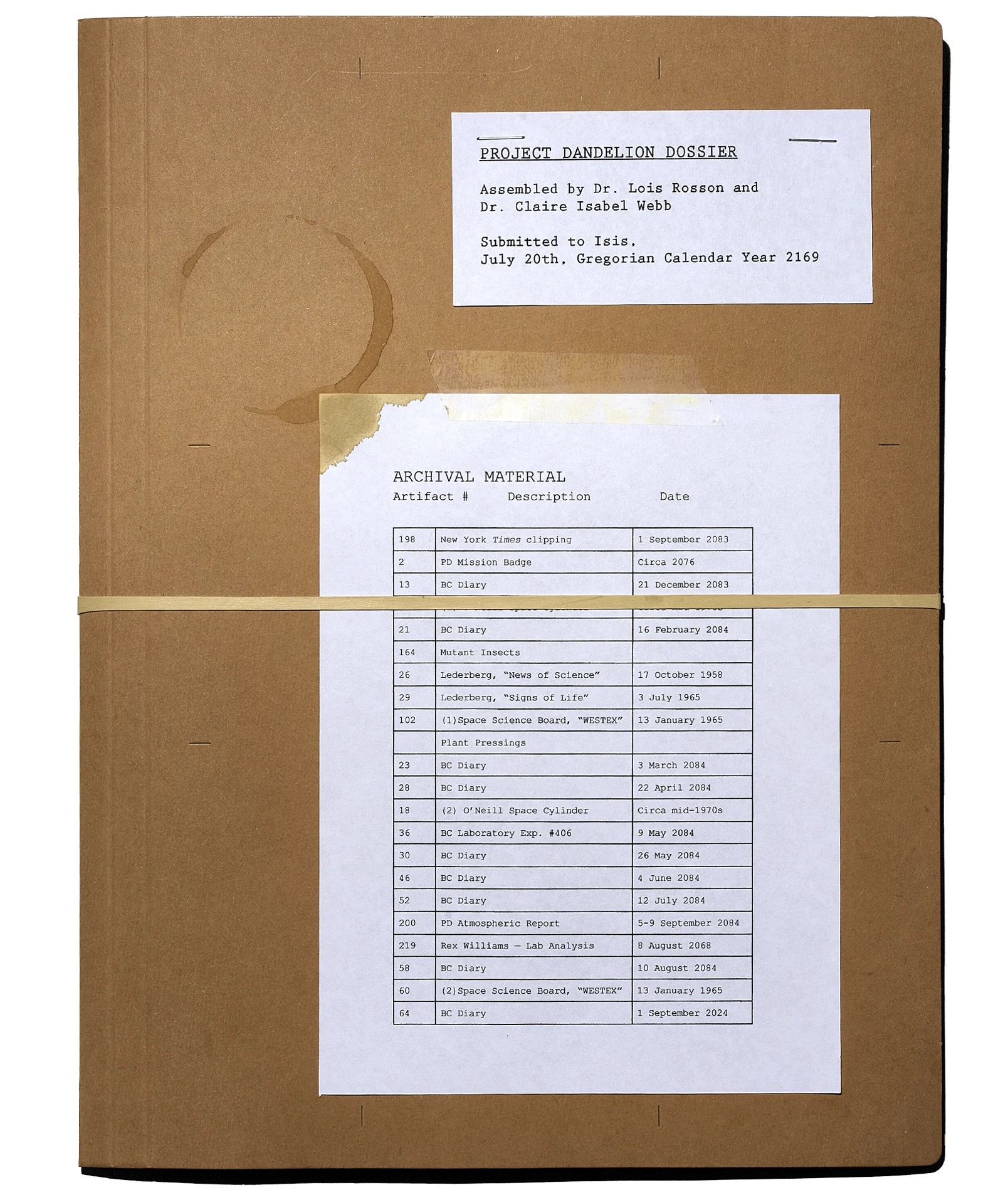
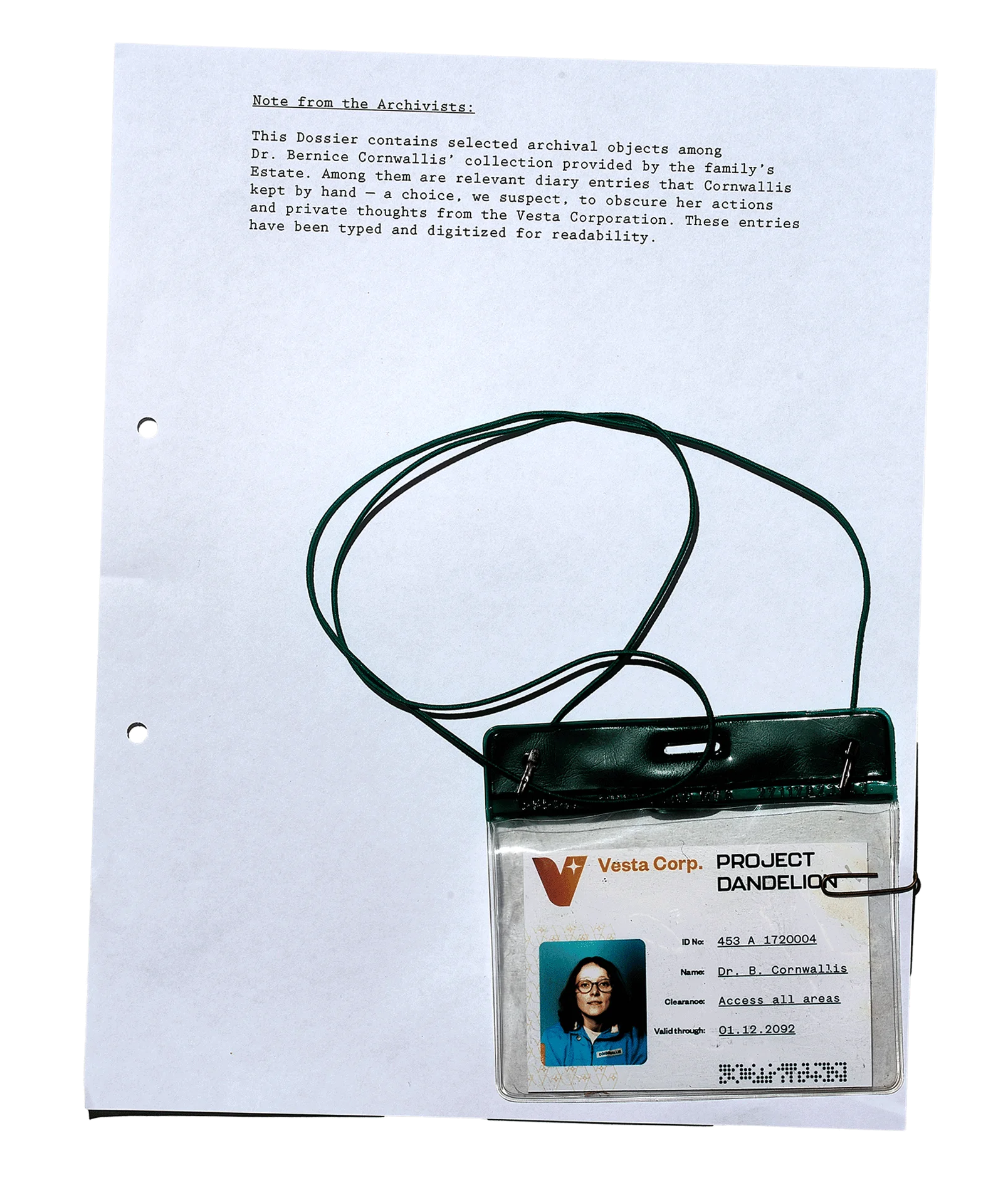
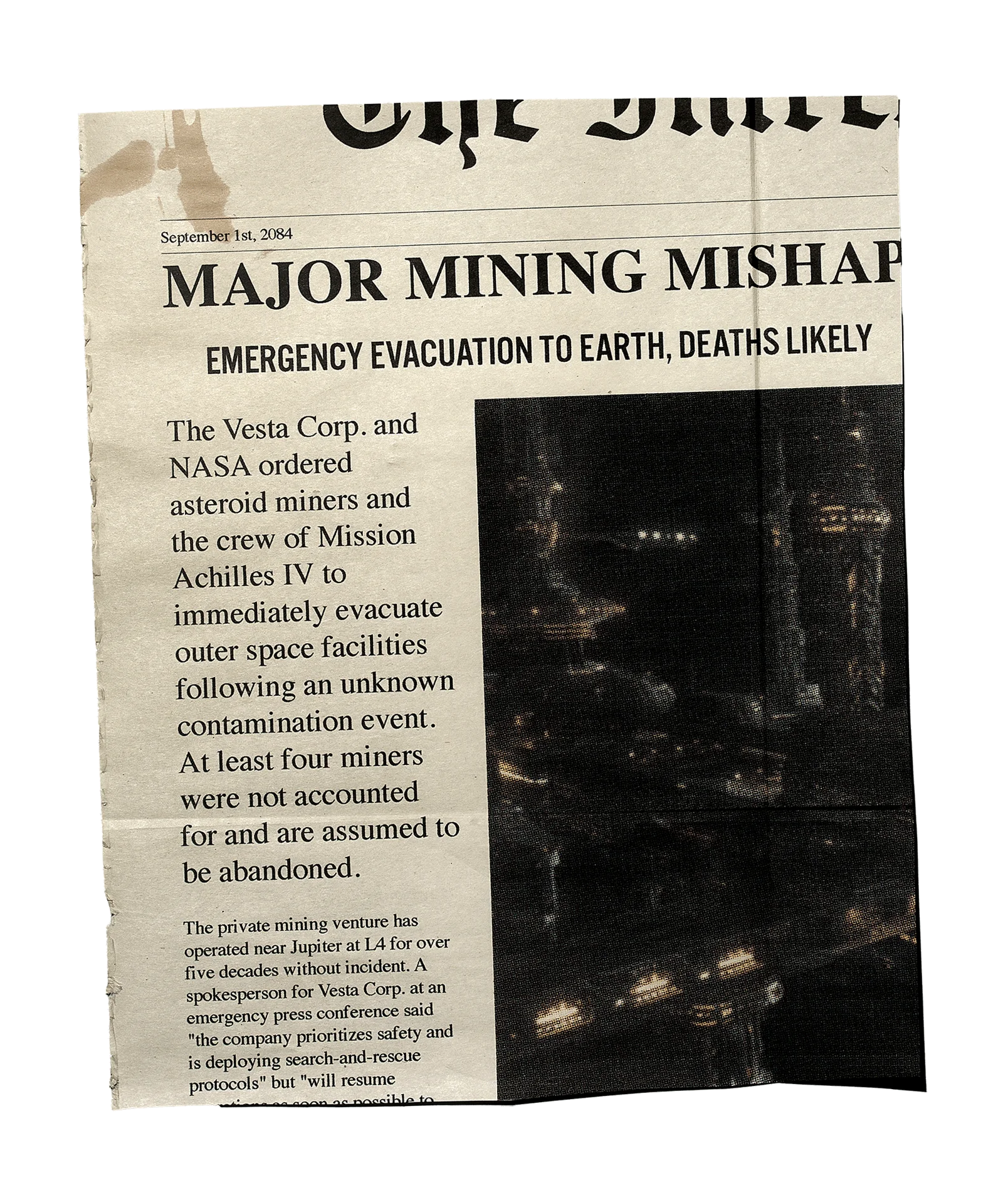
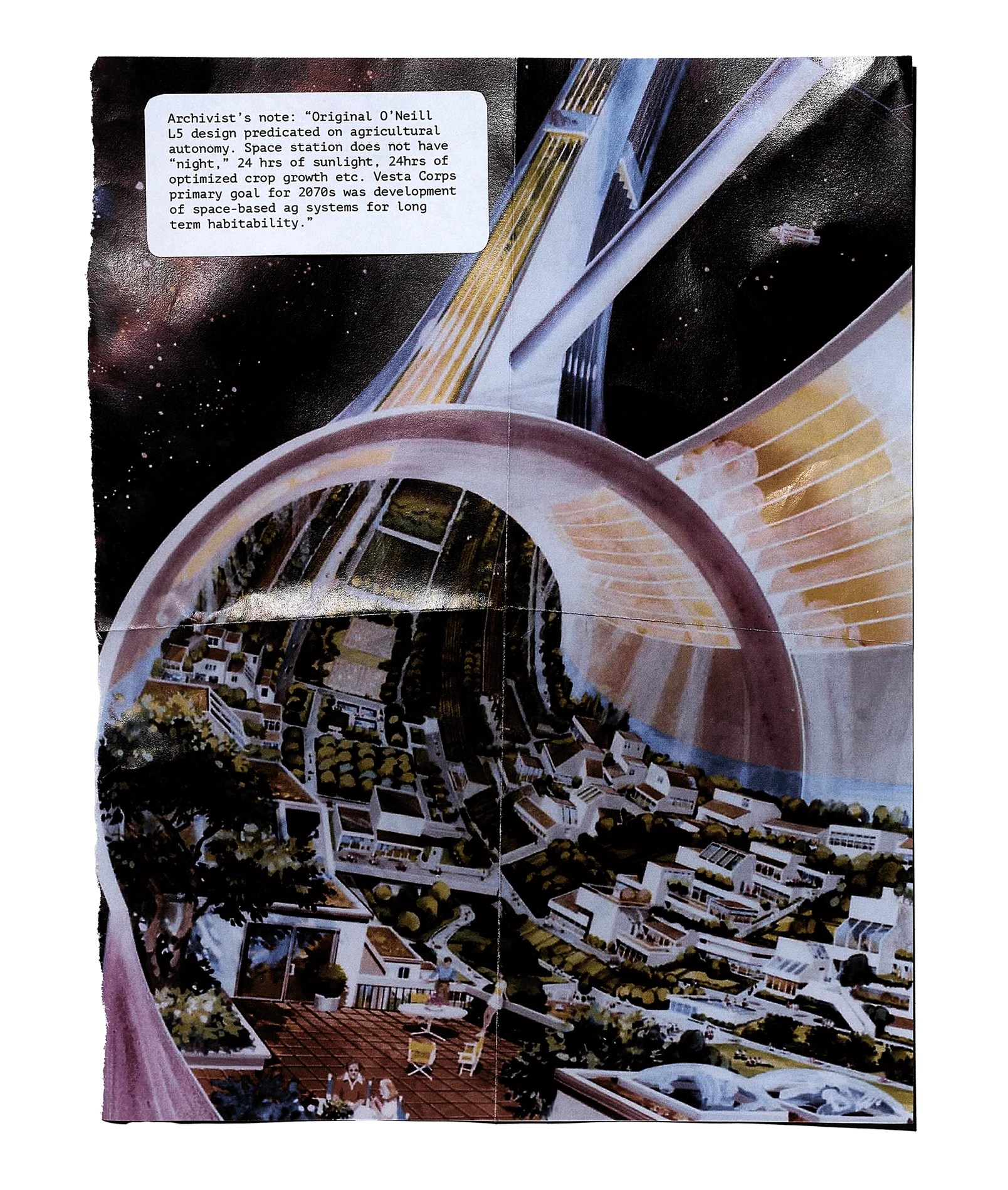
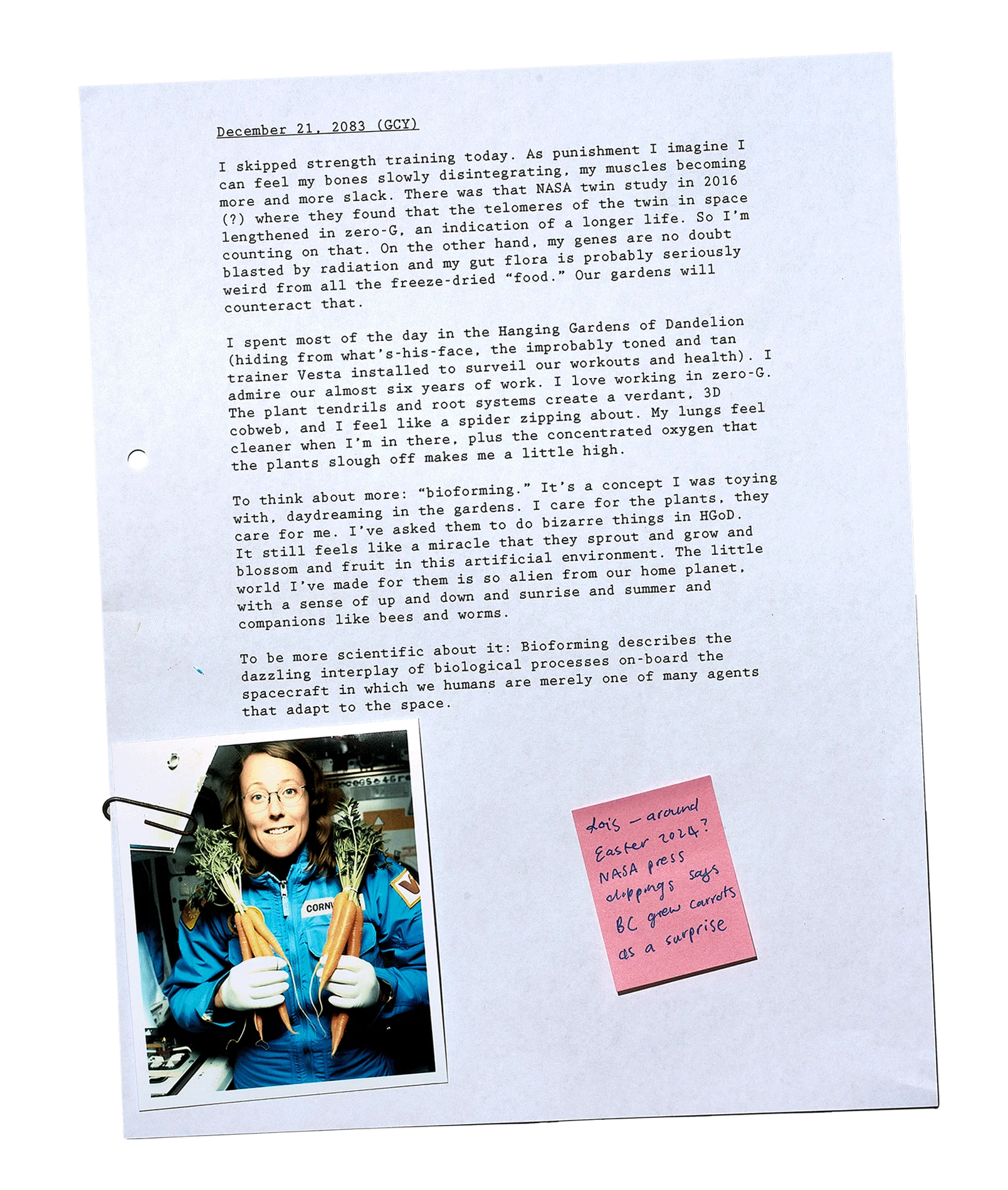
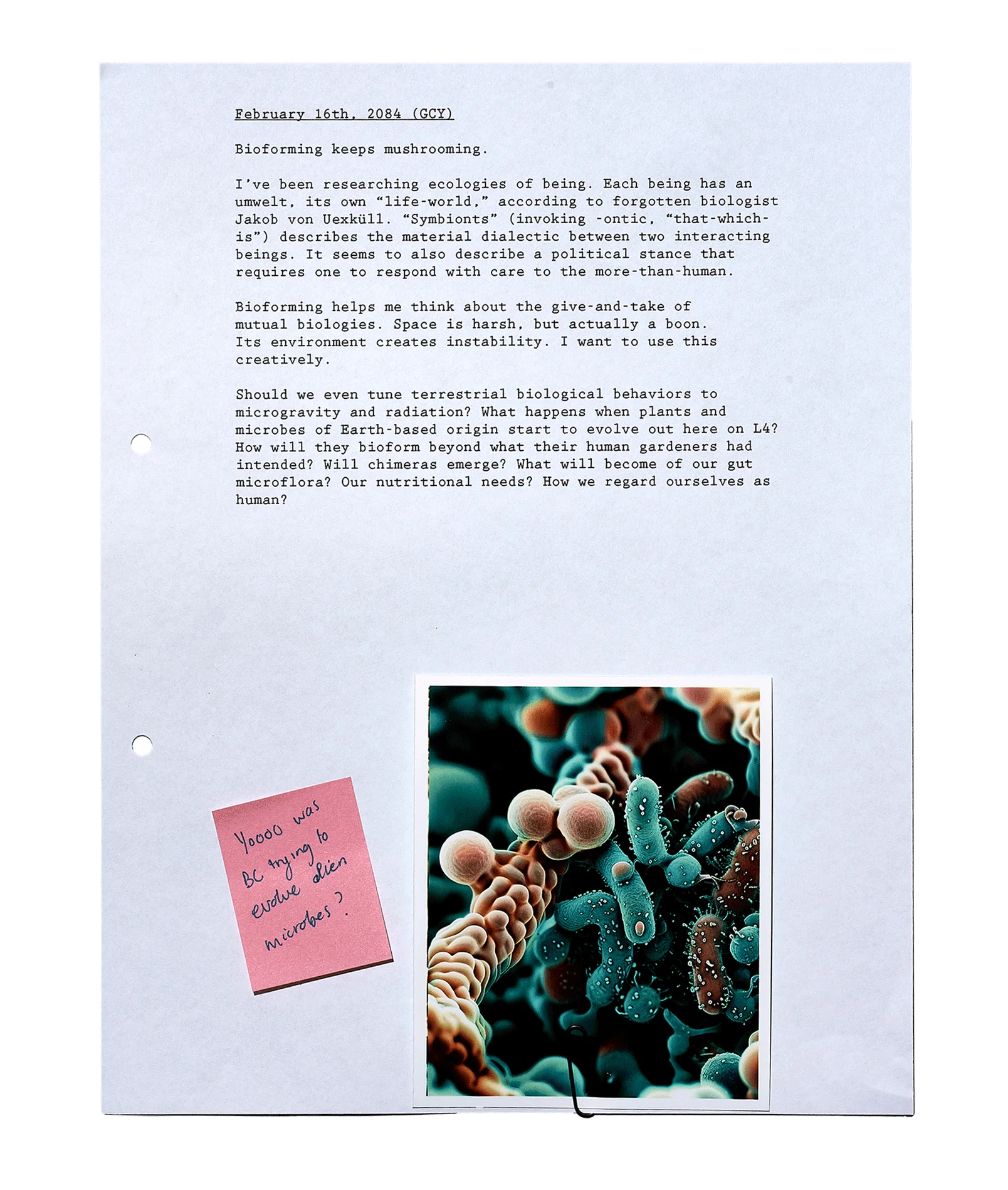
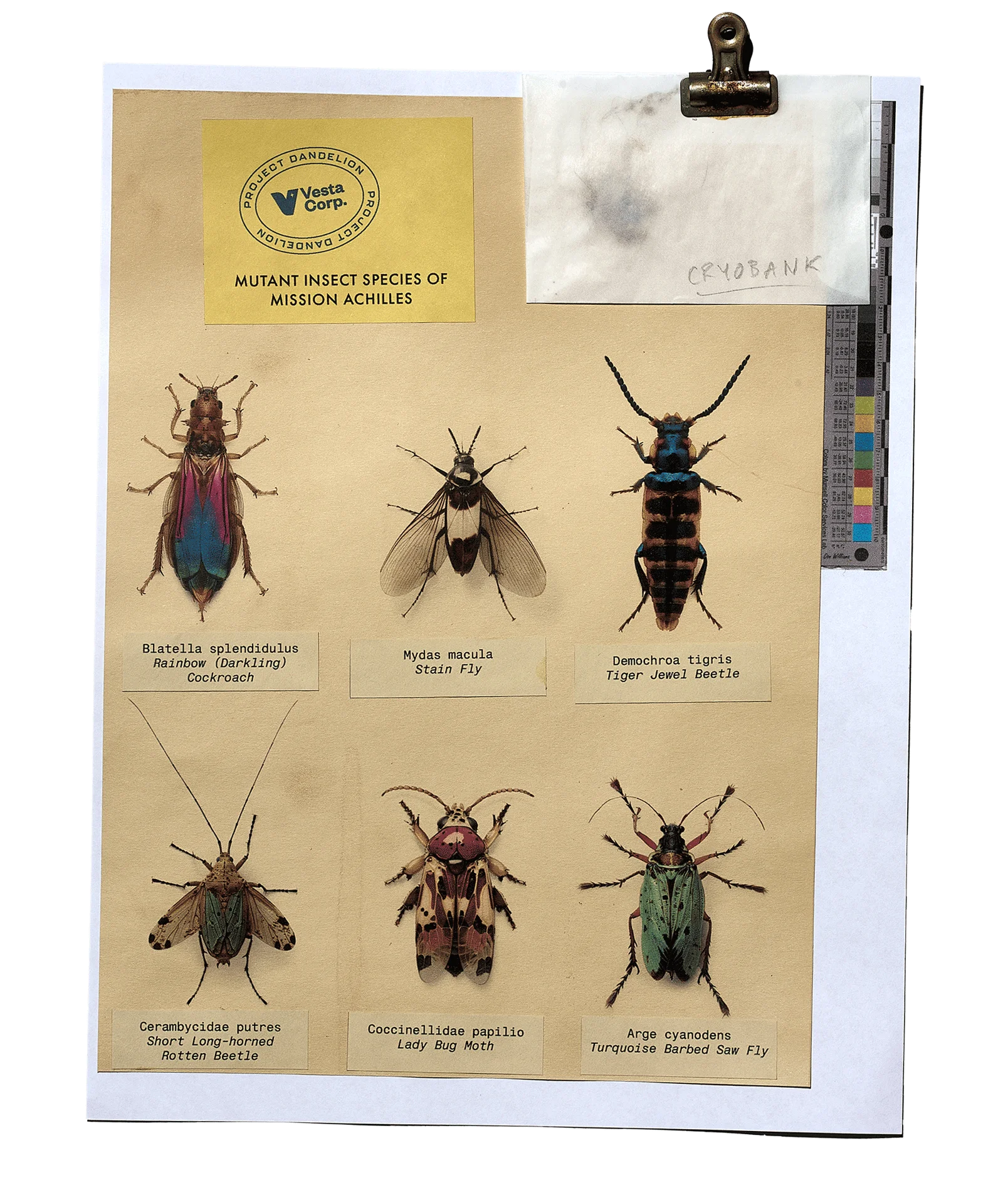


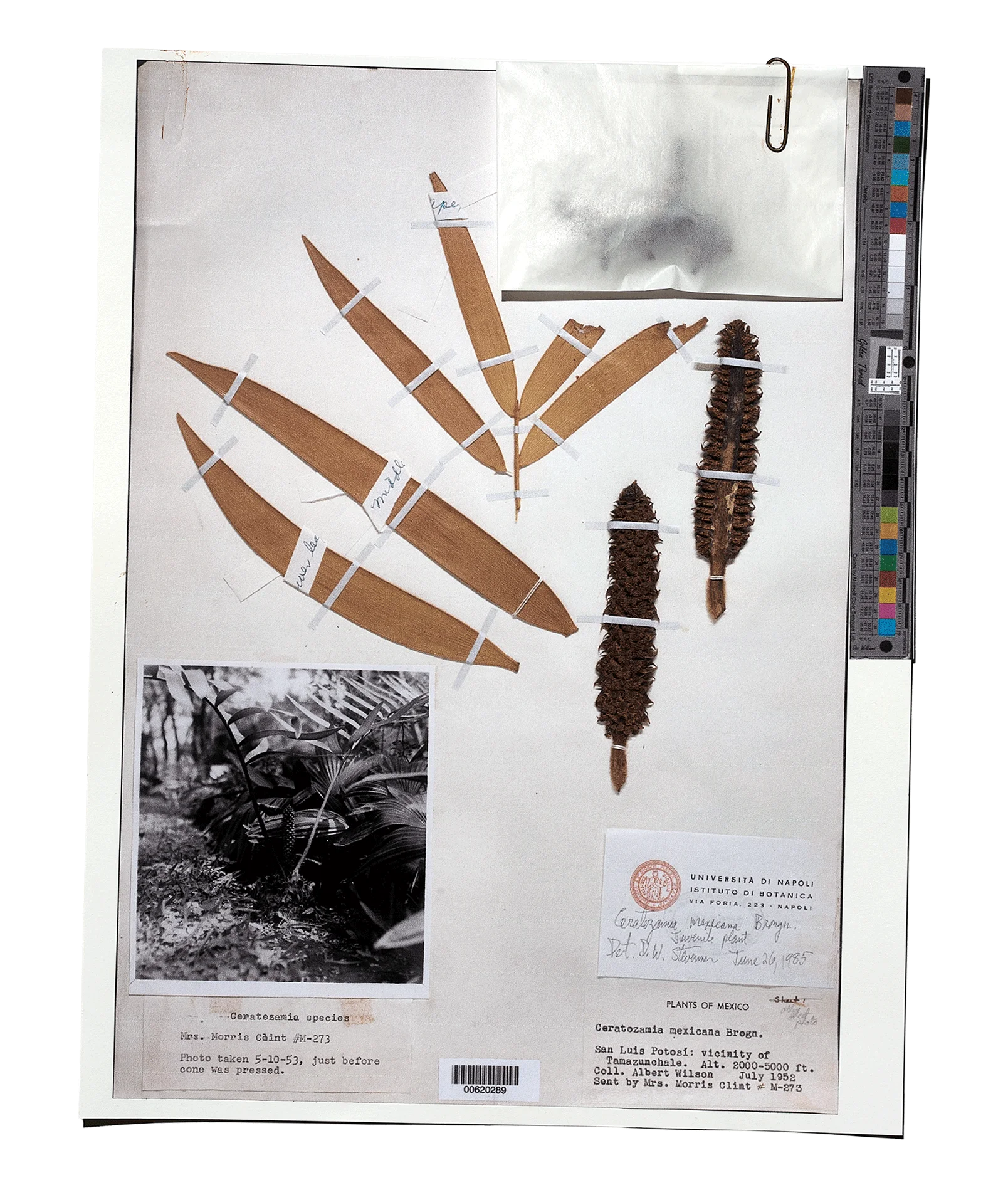

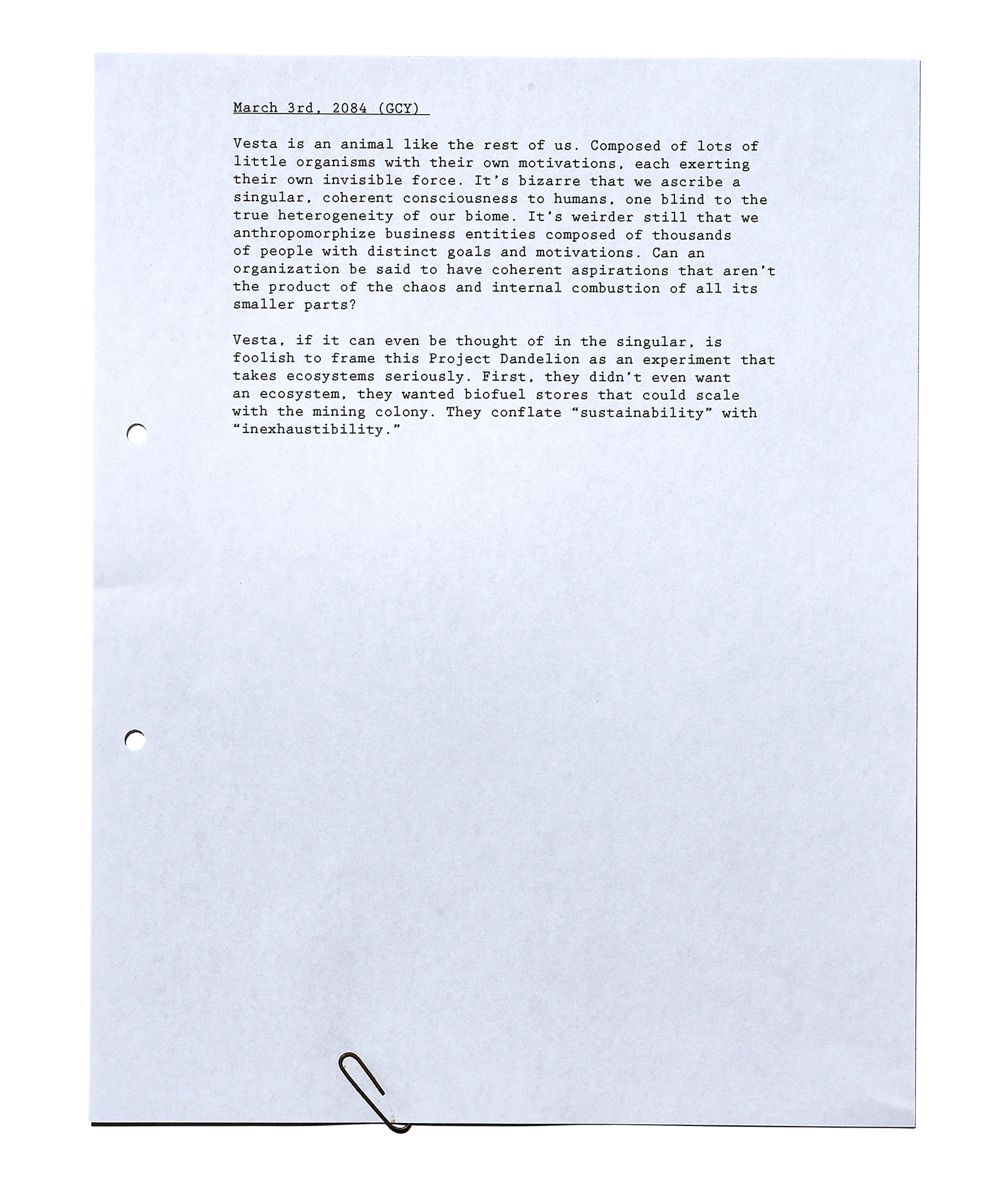
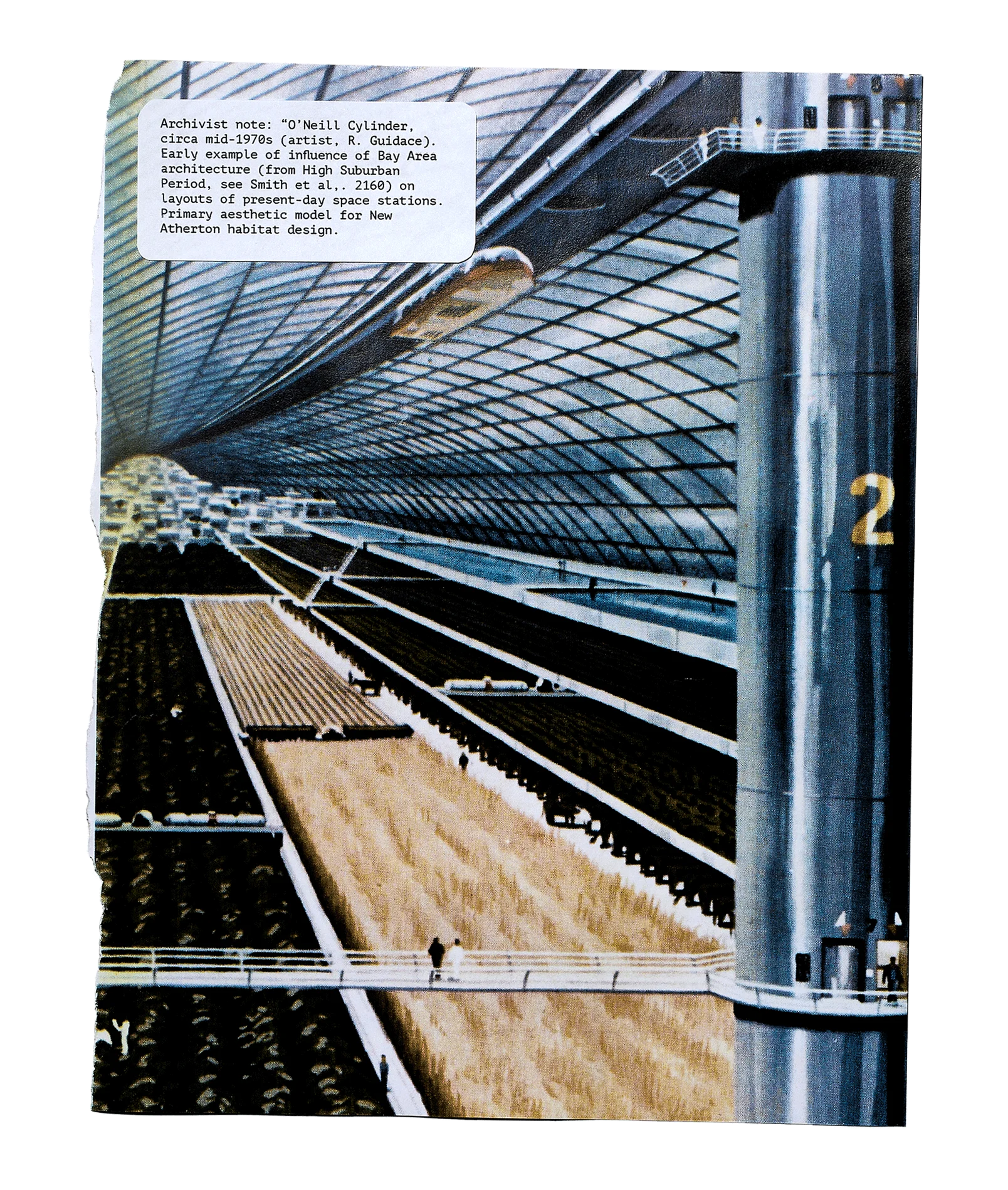
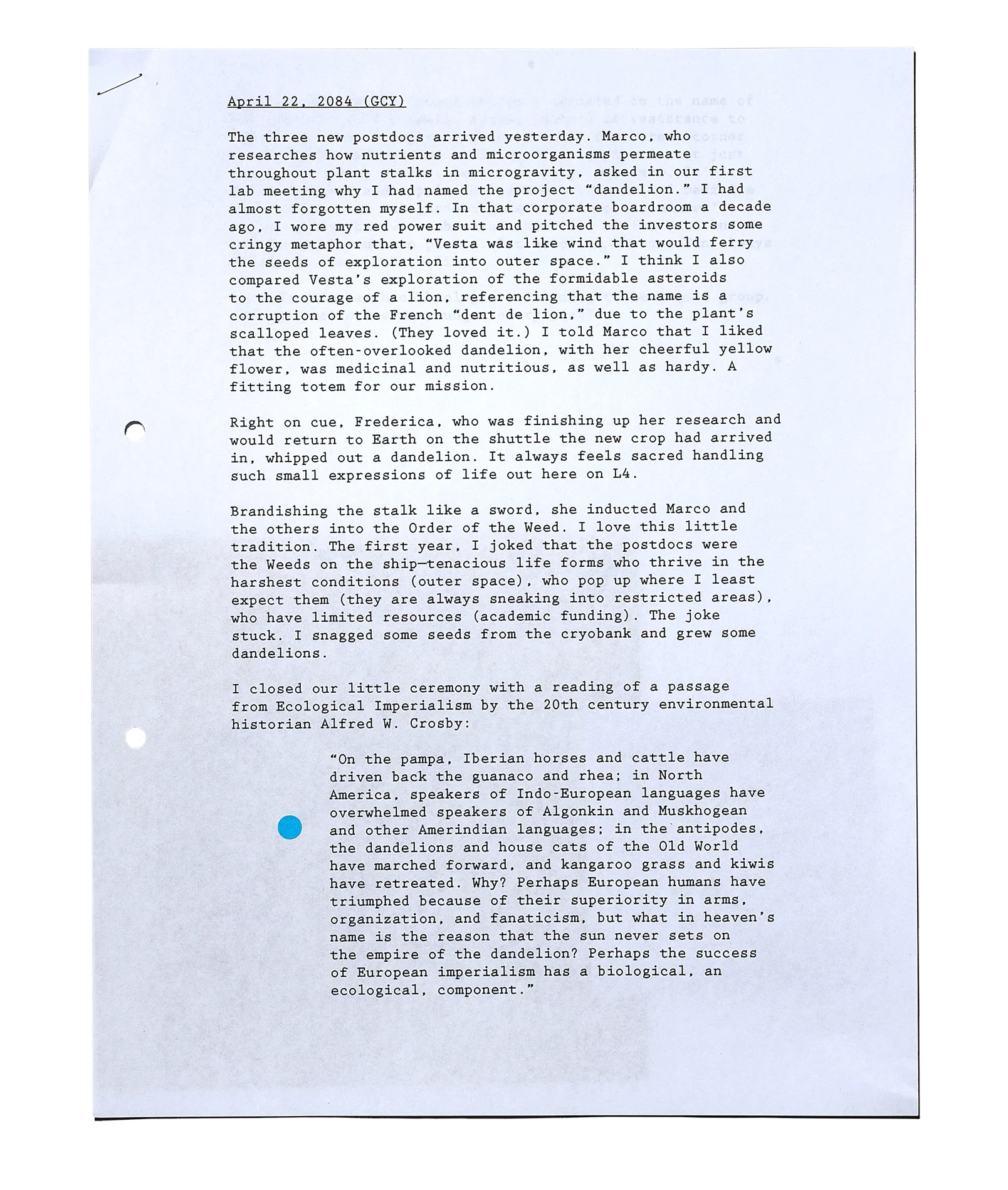
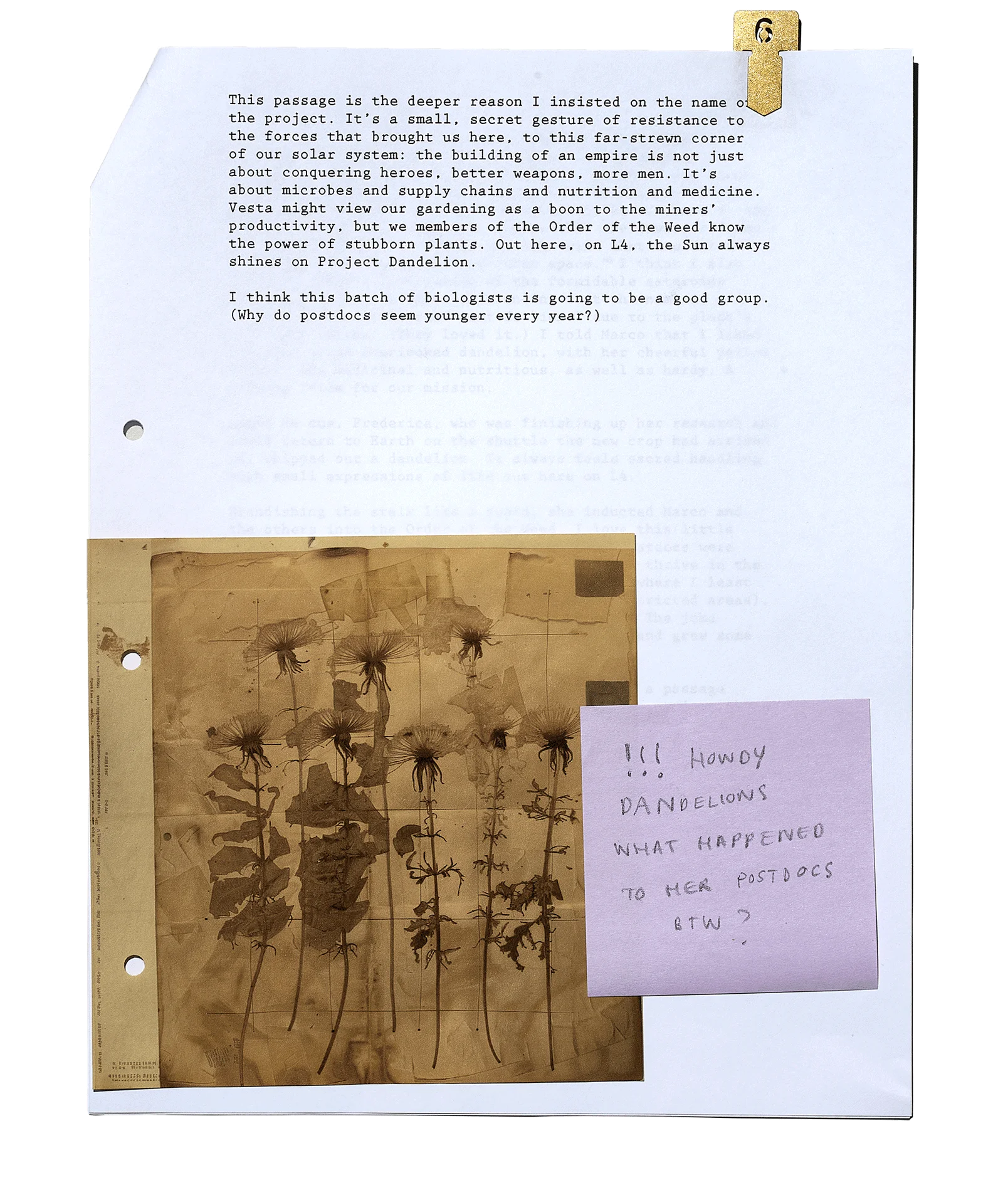
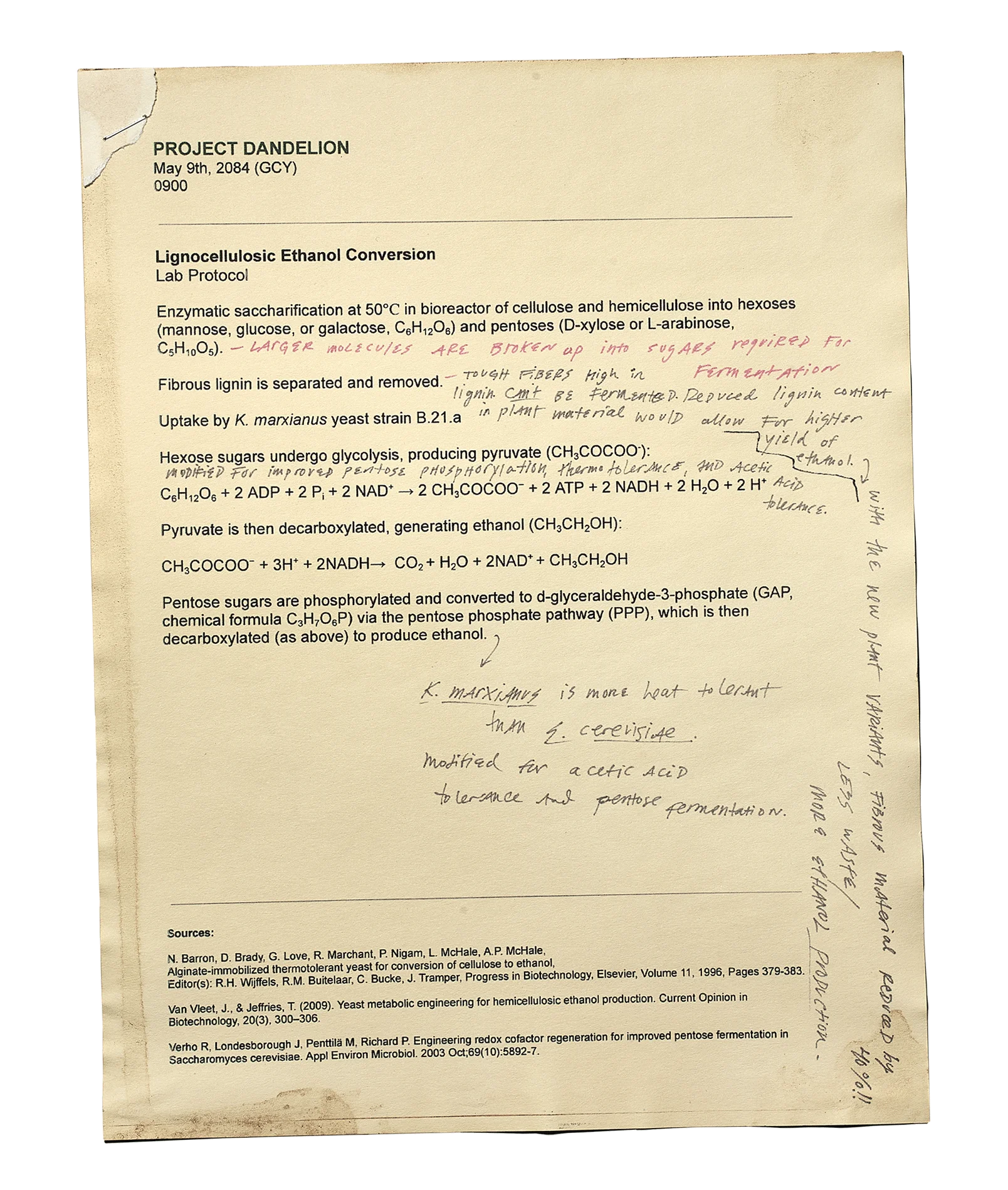


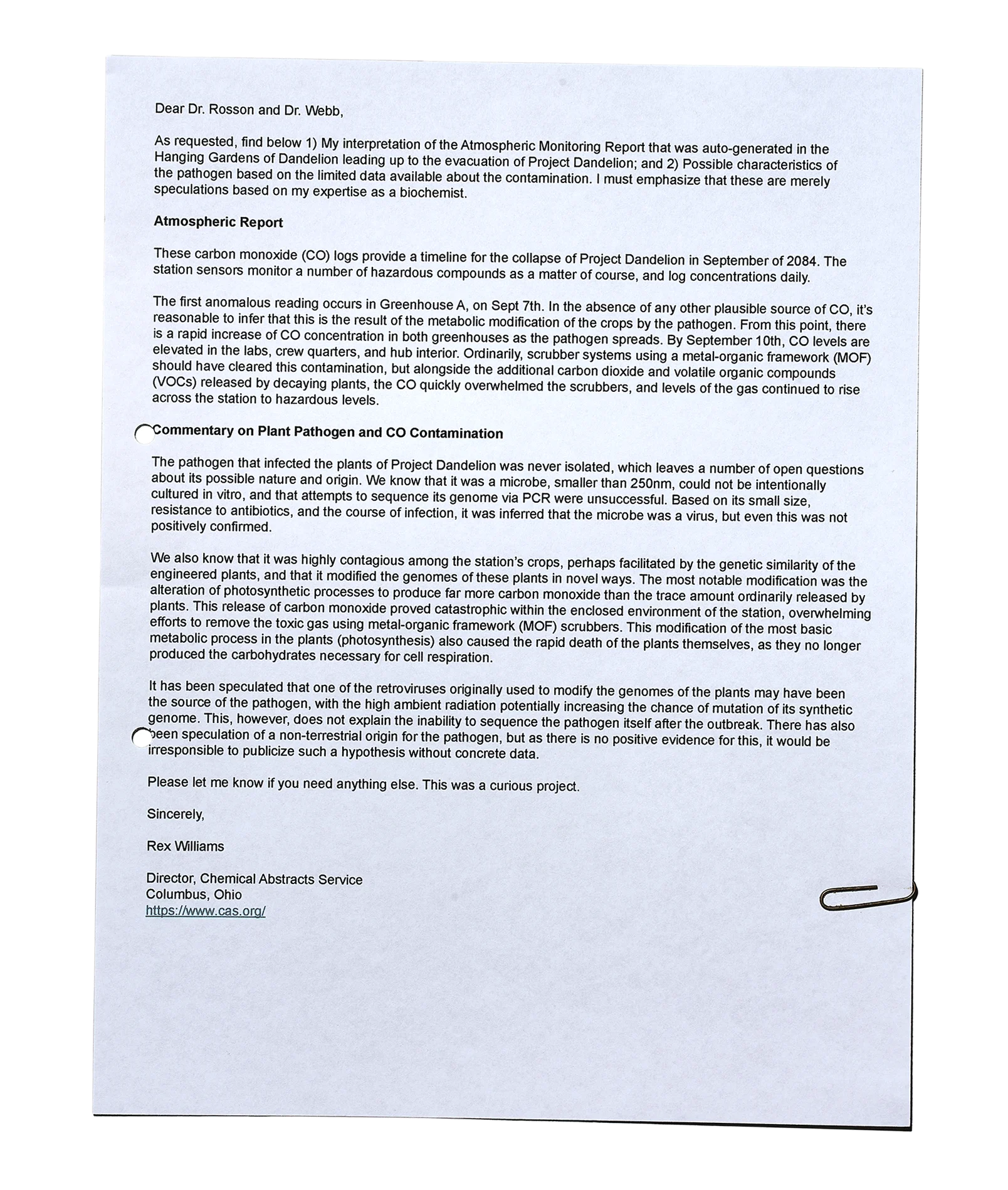
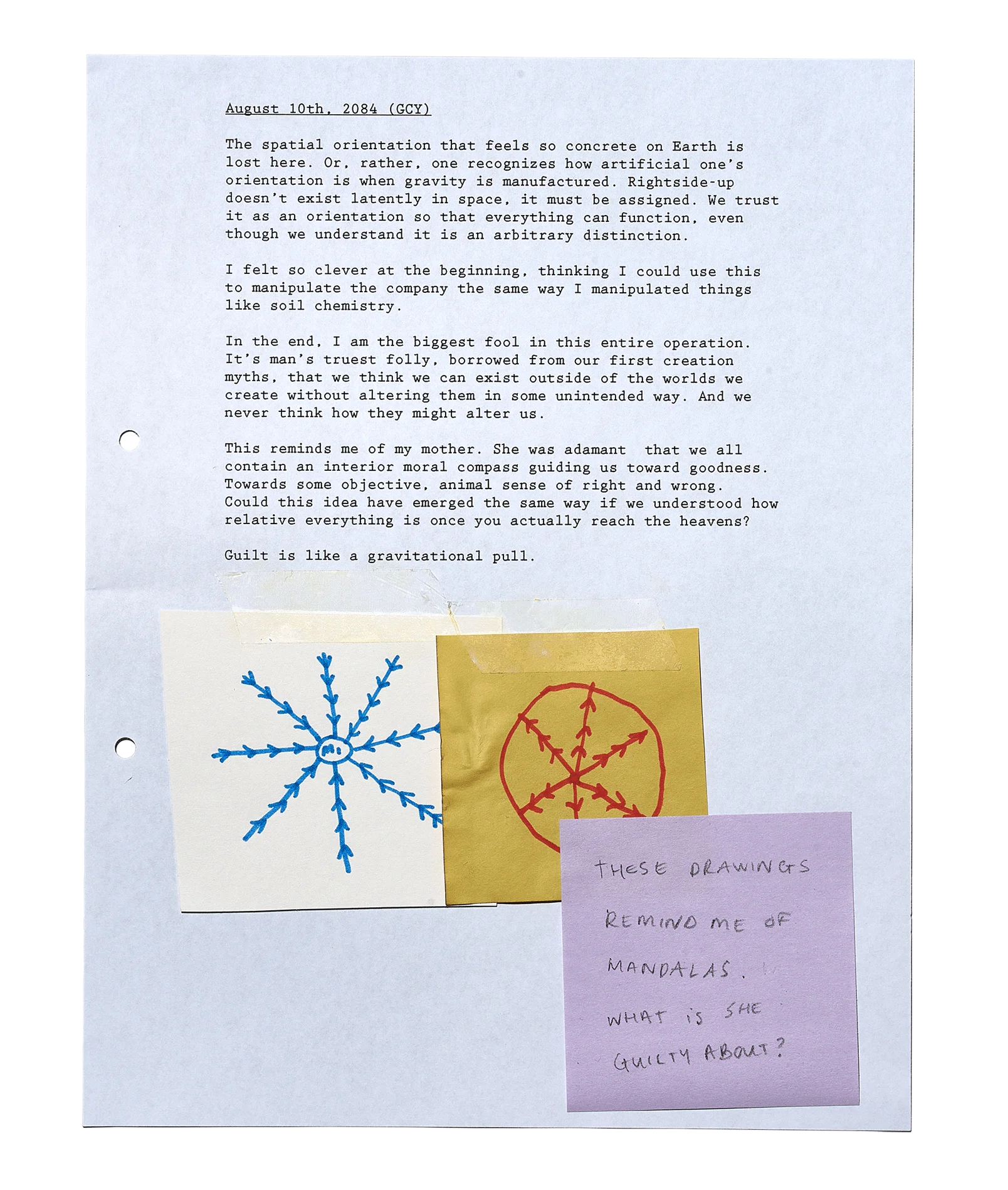
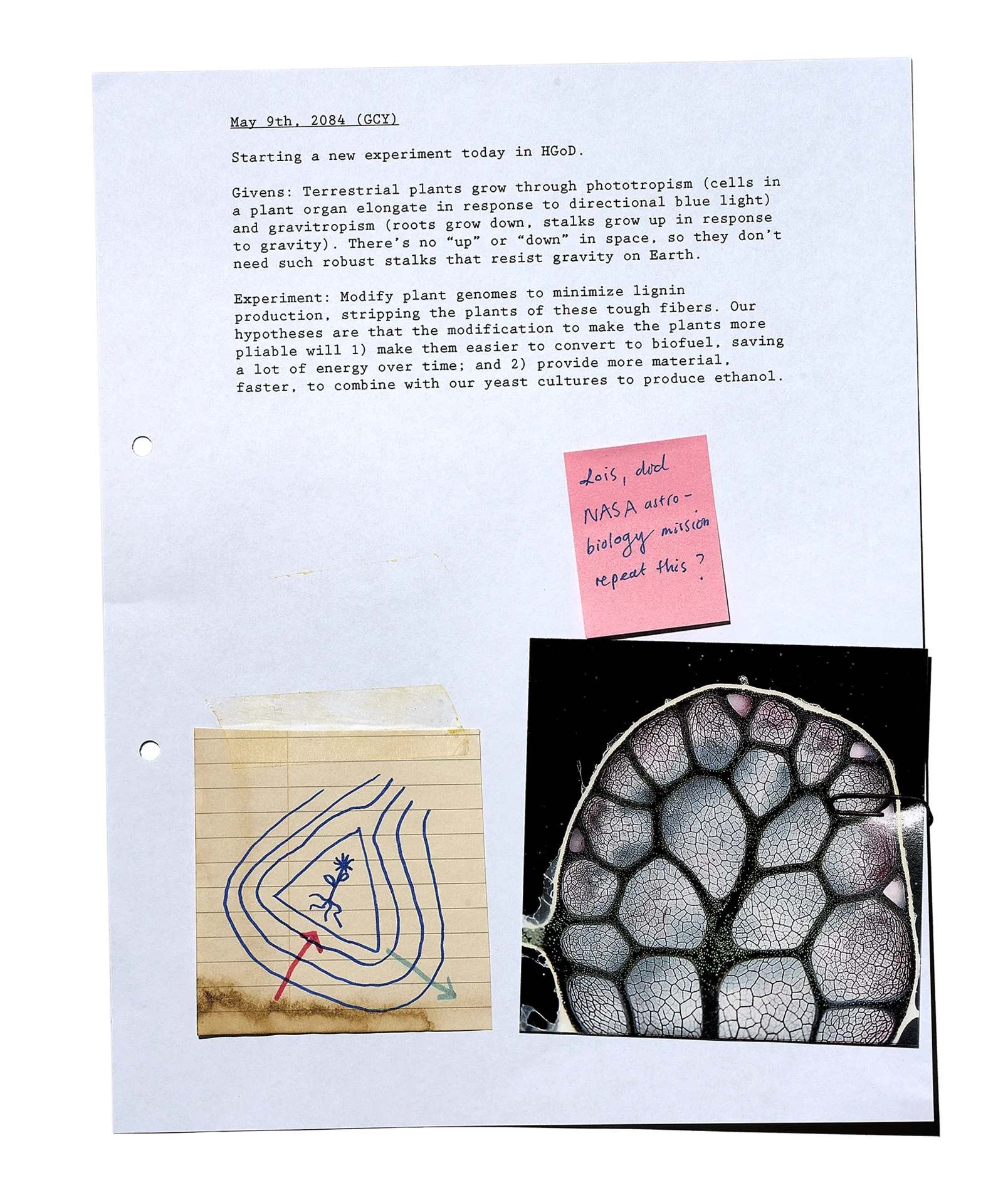
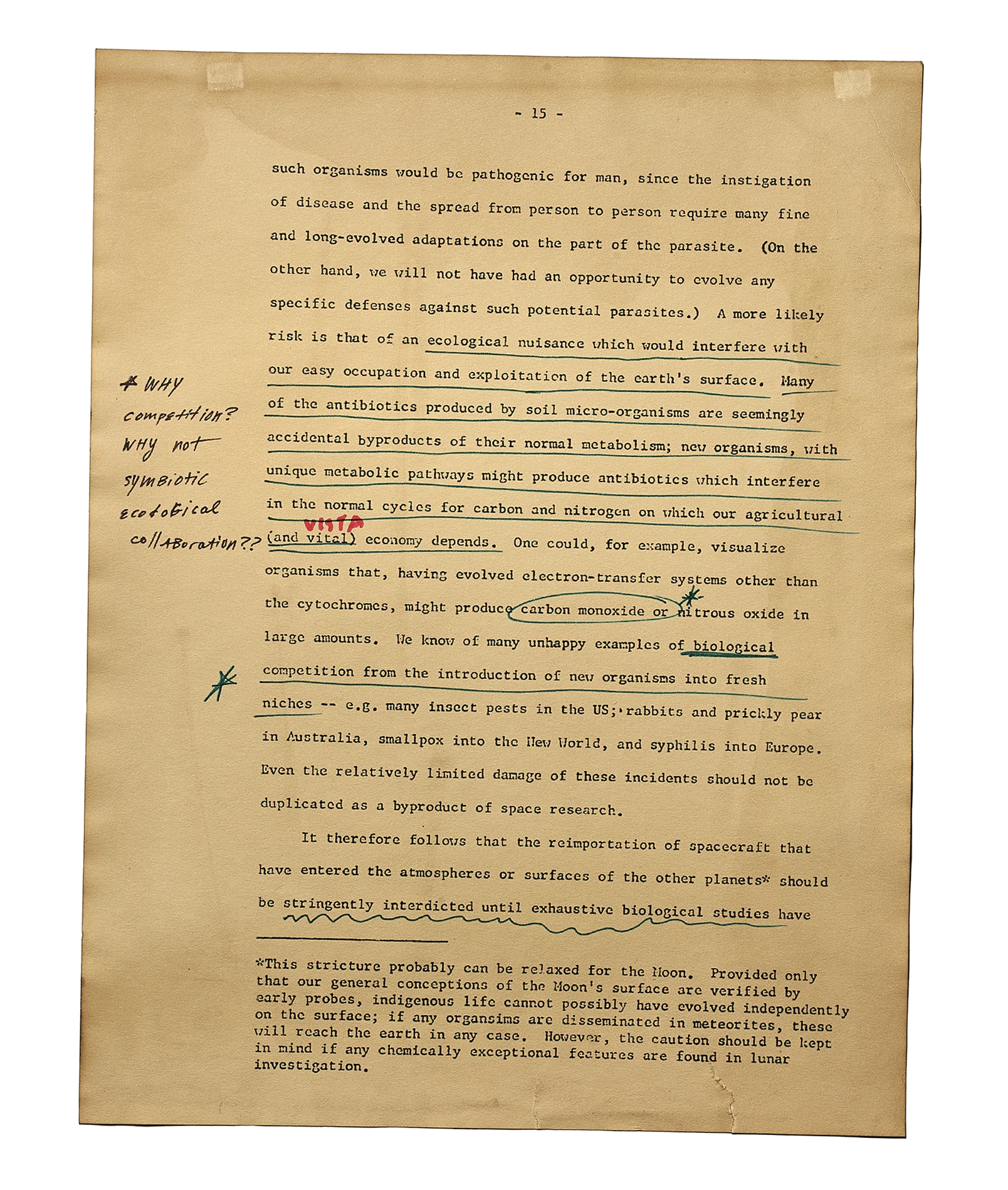
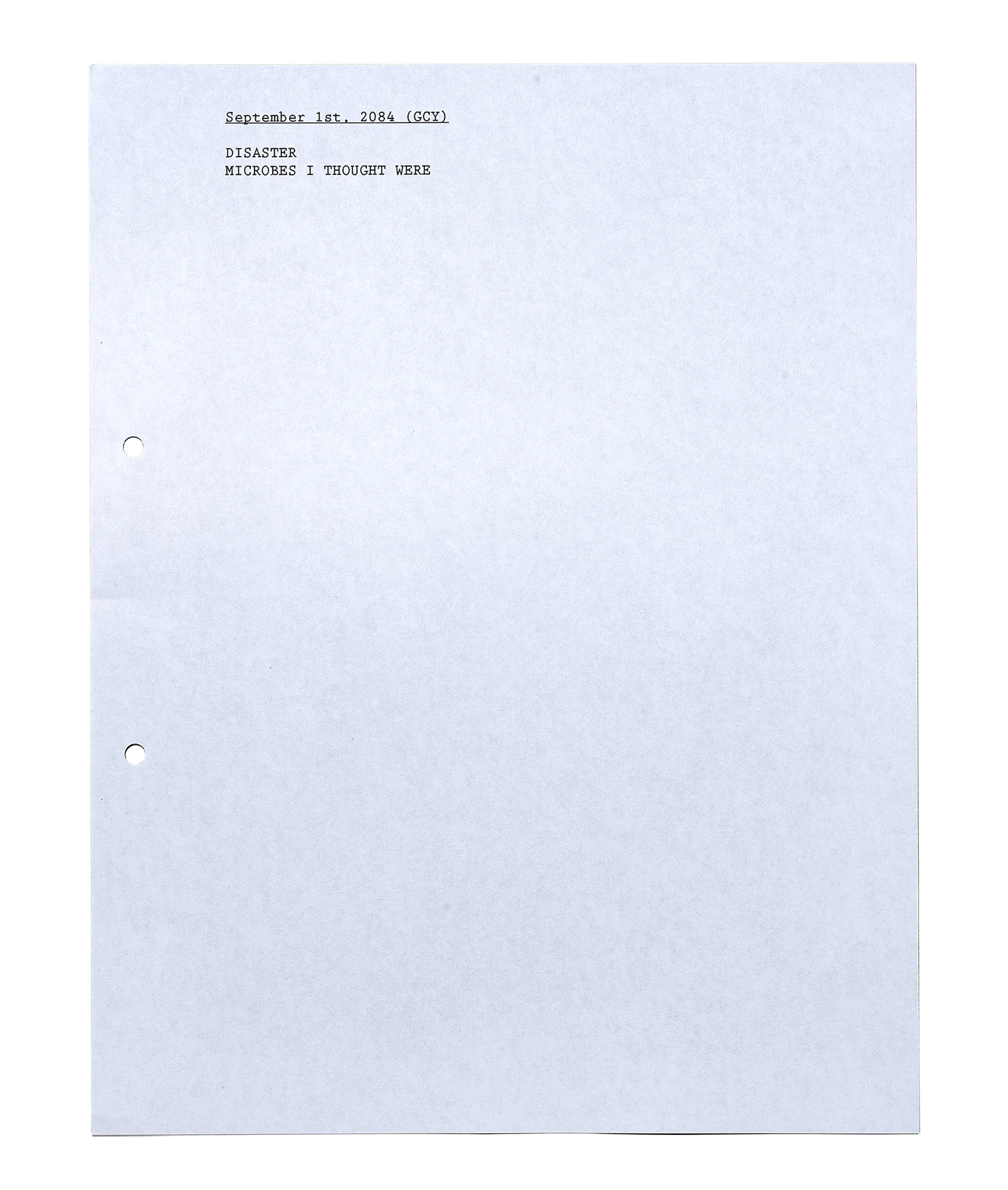
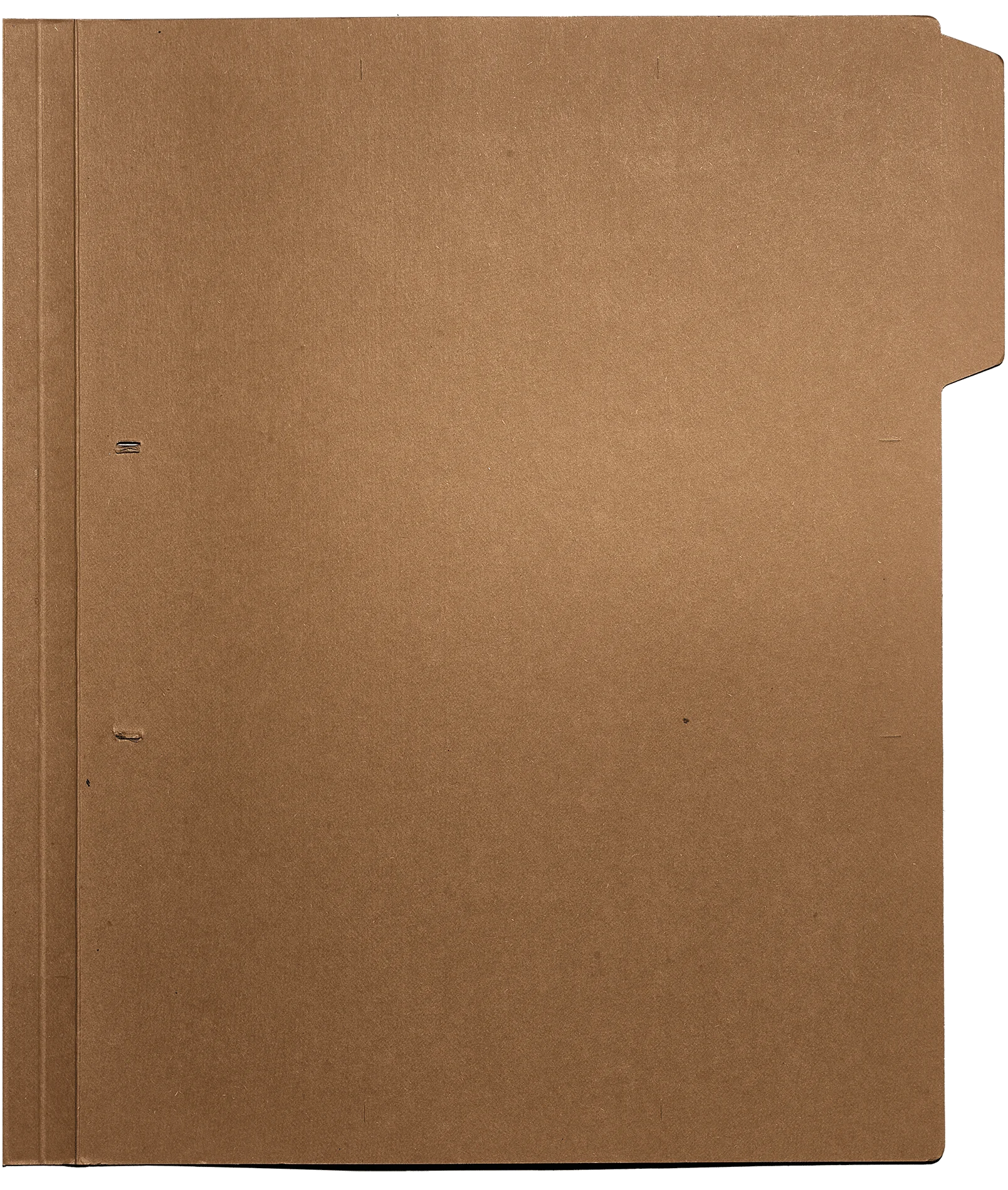
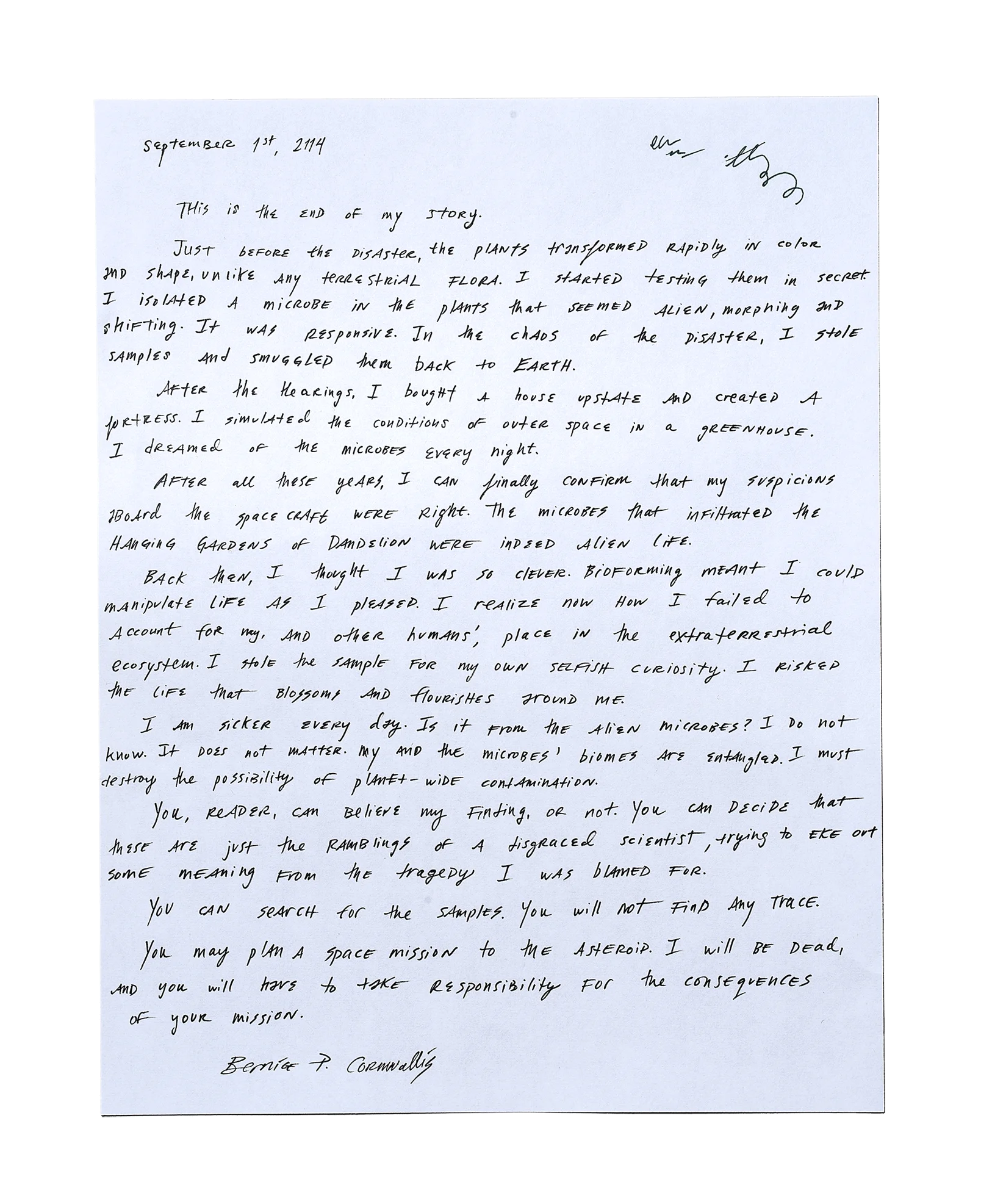
“On the pampa, Iberian horses and cattle have driven back the guanaco and rhea; in North America, speakers of Indo-European languages have overwhelmed speakers of Algonkin and Muskhogean and other Amerindian languages; in the antipodes, the dandelions and house cats of the Old World have marched forward, and kangaroo grass and kiwis have retreated. Why? Perhaps European humans have triumphed because of their superiority in arms, organization, and fanaticism, but what in heaven’s name is the reason that the sun never sets on the empire of the dandelion? Perhaps the success of European imperialism has a biological, an ecological, component.”
Alfred Crosby, Ecological Imperialism, 1986. Quoted nearly a century later by Dr. Bernice Cornwallis. “April 22, 2084,” personal journal entry, Project Dandelion, BCE280.02.2116, box 28, folder 7, Cornwallis Estate Papers, Syracuse, New York.
“Empire of the Dandelion” borrows from Alfred Crosby’s 1986 work on environmental history, Ecological Imperialism, in which he describes how imperialist expansion operated in tandem with ecological settlement. In Crosby’s telling, European conquest was facilitated by the introduction of plants, animals, and agricultural strategies that fundamentally reshaped indigenous landscapes. It was this biological terraforming that presaged the sociopolitical success of conquest and empire.
Just as Crosby emphasizes ecological settlement as an essential but under-examined factor in the Age of Discovery, our story explores how biological research from the Space Age to the speculative future in 2119 powerfully forms, and will reform, imperialist projects beyond Earth. In our story, hegemonic space powers recognize biodiversity to be a precursor to the successful settlement and colonization of the space environment. The introduction of familiar plant life by way of space-based agriculture is intended to supplement human capacities in a hostile environment. But they, like past colonizers, do not account for the non-cooperation of organisms conscripted into the settlement process.
We set out to explore the recalcitrance of organisms within an industrial-capitalist framework. Over coffees, Zooms, and writing sessions, we asked each other: What will be the weeds of space settlement? Those dismissed but essential biological factors? How can we imagine a future in which we collaborate with plant and animal ecologies instead of just metabolizing them into expansionist projects? How might these organisms, critical to the survival of humans in new environments, refuse cooperation? In light of the lingering pandemic, we asked, What, exactly, does flourishing mean, and for whom?
“Empire of the Dandelion” is composed of two companion texts. We wind time forward to tell a story in, presently, our near future. Imagining ourselves as historians of science in 2119, our journal article takes place in a universe in which Gerard O’Neill’s 1976 vision of space colonization came to fruition and spurred an outward push into the solar system. That is, space agencies realized O’Neill’s Space Age vision in the High Frontier—outer space colonies that incorporated the values of postwar white, suburban, and pastoral America.
Although O’Neill’s space settlements never materialized, his philosophical treatment of expansion as a salve for industrialized capitalism and its luxuries continue to permeate contemporary aerospace. Project Dandelion exists on an even farther space periphery than the fictional O’Neill-style settlement constructed at Earth L2, representing the continual push outward into the search for new resources in extreme environments.
The secondary text is our protagonists’ journal. Biologist Dr. Bernice Cornwallis records a secret history of the asteroid-mining project, incorporating real archival material from the late 1950s-1960s when Space Biology emerged as a new and exciting field. We created an arc from NASA’s early days when exobiologists hoped to discover extraterrestrial life and researched the dangers of biological contamination (a history overpowered by the popular fascination of manned missions); to today, in which O’Neill’s speculative projects still haunt the anticipated colonization of Mars (Jeff Bezos, for instance, envisions an extraterrestrial suburbia, replete with cul-de-sacs and ornamental pine forests); to a near future still to come. We hope this future recognizes, cares for, and respects alien biologies that could shape our space futures and what it means to be extraterrestrial humans.
With that goal, we invented the concept of bioforming.
Cornwallis is the force driving the phenomenon in “Empire of the Dandelion” as she recognizes, cultivates, and experiments with—but ultimately cannot control—astrobiologies. Bioforming describes a cybernetic system that supersedes the man-machine feedback loop so essential to the twentieth century’s technoscientific architecture. We framed bioforming as a rehabilitation of terraforming, that is, how speculative outer space settlers plan to adapt extraterrestrial places to human living. If terraforming centers humans’ power to refashion worlds to their will (geologically, atmospherically, technologically), then bioforming insists on the agency of extraterrestrial life forms to respond, push back, thwart, and surprise humans. It flips the script. We are aliens in outer space.
Bioforming accounts for an ever-shifting ecology of actors and entities who continually shape and are shaped by each other. It represents a hydra-like ontology that includes business strategies, research funding, humans, machines, plants, animals, and microorganisms. Bioforming (unlike terraforming) springs not from a logic of control, but rather collaboration. It borrows from ecofeminist traditions, but rather than framing it as an unproblematic solution to capitalist hegemony, our story contends with life’s messiness, unpredictability, and potential to harm, not just nurture, humans. Cornwallis’s implementation leads to the deaths of innocent participants in capitalist systems. She is an archetypal Icarus, convinced that her understanding of the incompatibility between healthy ecosystems and industrial scale will allow her to participate in the system in more embedded and predictable ways. The tragedy Cornwallis laments at the end of the story is not Project Dandelion’s collapse, but her false conviction that she could step outside of a system and truly see it. Like the corporate entities she manipulated in order to build her garden, she was always one of the organisms contained within its ecological parameters.
If humans are always inside of the ecologies we engineer—but resources are still zero-sum—then collaborative models would inevitably result in outcomes less oriented around human successes. Vesta’s corporate model is predicated on the extraction of resources for the creation of human wealth. Thus, back on Earth, Cornwallis’s treasonous subterfuge has her nearly sent to prison. She, too, is an uncooperative organism within capitalistic imperialism.
In the spirit of our intellectual bioforming, our protagonist, Bernice Cornwallis, is a partial anagram of our full names.